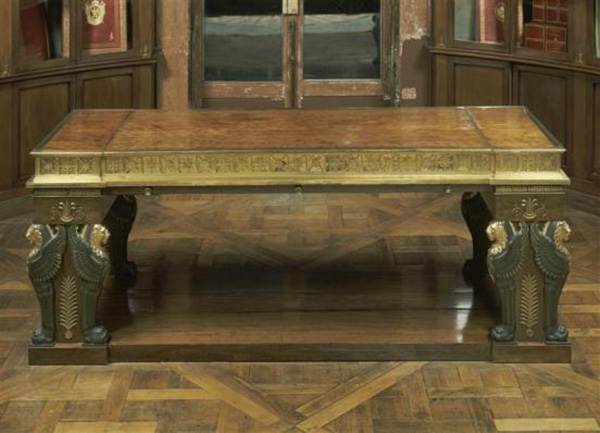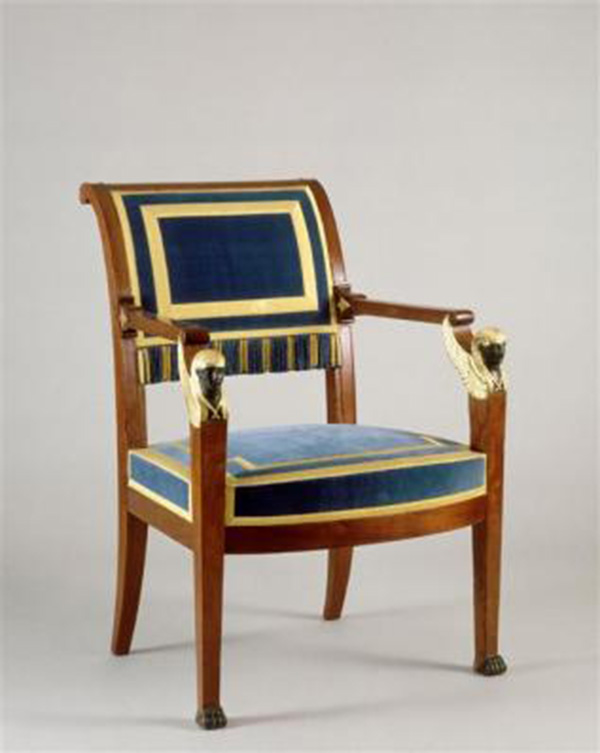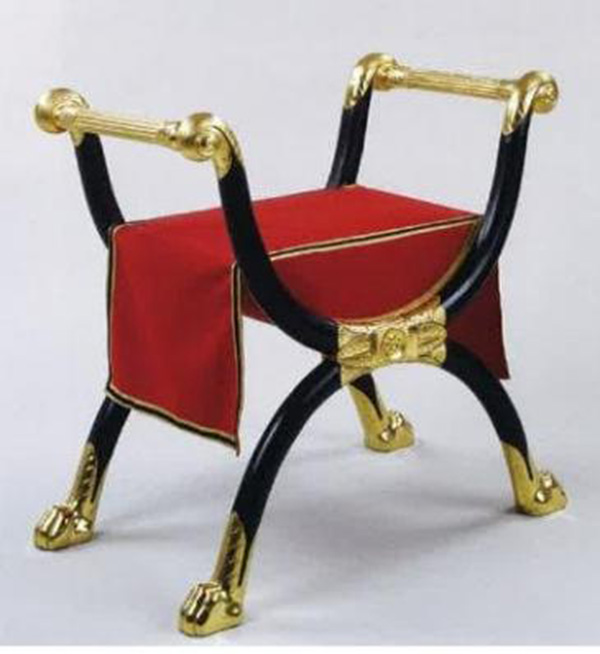Directoire
Download PDF
The Directoire style, also called "Messidor style", occurs from 1789 to 1804. Although it happens during the French Revolution, the Directory and the beginning of the Consulate, its name comes from the political regime from 1795 to 1799 during which the five Directors held the executive power. If the Revolution interrupted the artistic production, the orders started again with the Directoire. A certain simplicity then characterized the taste of this new society.
The Directoire style inherited the classicism of the Louis XVI style, particularly through references to the Antique that even became ubiquitous thanks to to, among other things, an ideological connivance : the Republicans ideas tooke root in the ancient world and this inspiration echoed a certain rigidity prevailing at the time. The Directory was indeed a period of somewhat austere customs, and the consequence on the artistic production was the strengthening of the antique whose straight lines accentuated the geometric forms. Curule seat, symbol of power in ancient Rome, thus became characteristic of this era, such as the one exhibited at the Musée des Arts Décoratifs in Paris attributed to Jacob Frères.
This movement, which will take the name of neoclassicism, will attain its maturity during the Empire. However, if the Directoire style marked the transition between the Louis XVI style and the Empire style, it was more severe than the first and had neither the wealth nor the abundance of the second. Purity, elegance and simplicity were the watchwords. Adam Weisweiler, for example, will be the author of this cabinet characteristic of this end of century by the use of mahogany veneer as well as by the purity and simplicity of the lines. The mahogany was during this period a dominant material (massive or veneer) that the Jacob Frères, in particular, will use, although the fruit trees and the walnut were sometimes used. Other materials such as polished steel or iron were also used.
Otherwise, the ornamentation was discreet, which was also due to the closure of many cabinetmaking workshops during the Revolution. However, in addition to the Antique motifs, sometimes called the Etruscan style, including sphinges (sphinx with a woman's head), there is a repetitive decorative motif: the carved out diamond, which was often inserted with a round palmetto. Moreover, the fireplace of the time were most often two-colored.
The most famous furniture of the period is undoubtedly the Salon of Madame Recamier which includes a stool, a daybed, a pair of bergères, a pair of armchairs, a pair of fauteuils and a stool. This set, which is probably the work of Jacob Frères, was made around 1798. It was in the apartment that Madame Récamier occupied at the Abbaye-au-Bois, rue de Sèvres, in Paris. The daybed takes the form of antique bench. The front legs are in the shape of baluster and the feet behind are made according to Etruscan style, as on the chairs. Winged sphinx with a woman's head adorn the armrests of the bergères and of the chairs, while lions' paws end the legs of the stool like the seats in the style of Roman Antiquity. Jacques-Louis David, who will be the great neo-classical painter, represented Juliette Recamier sitting on her daybed in the Portrait of Madame Recamier.
Moreover, the Revolution and Le Chapelier Law having canceled in 1791 all the corporations and their restrictive rules, artisans could henceforth establish their own workshops and produce without constraints. This law induced freedom for cabinetmakers and carpenters to work indifferently millwork wood or veneer wood. The Salon of Madame Récamier is a good example: the veneers of lemon are highlighted by the borders made of amaranth. Similarly, Jacob Frères used mahogany for this bed of Madame Recamier which, under the Ancien Regime, would have been in the field of carpentry and not cabinetmaking.
Paradoxically, few innovations appear, and the furniture’s production of these years seems to continue the creations resulting directly from the neoclassical style and the Louis XVI style. Some novelties however appeared during this period as the furniture with rear legs, square of section, that curve outward and the seats in the form of klismos, characterized by feet with a sword-shaped curve extended in the mounts of the back of the chairs. The front legs are sometimes turned and tapered.
However, with the Coup of 18 Brumaire, 1799, Napoleon Bonaparte established the Consulate. Although he did not join the throne until 1804, he now intended to dictate his choices with regard to the arts and their productions. The quasi-archeological style that will be the style of the First Empire saw the light of day especially at the instigation of Percier and Fontaine, unconditional defenders of the Antique. The ornamental repertory borrowed from the military and victory fields (helmets, trophies, swords, winged figures) was becoming more and more present and later will come the imperial emblems (eagles).
In fact, we find the first beginnings of the Empire style, especially from the return of the French Campaign in Egypt and Syria (1798–1801): a new and graceful furniture, which was a limited production whose furniture of Madame Récamier is a good example or the different pieces made by Jacob Frères exhibited at the National Museum of Castles Malmaison & Bois-Préau, was born.














